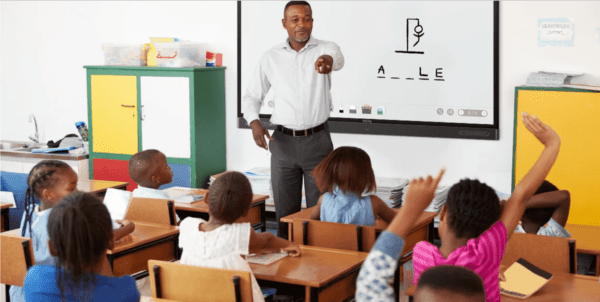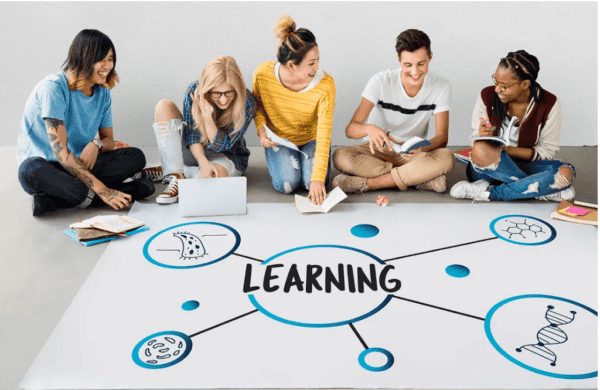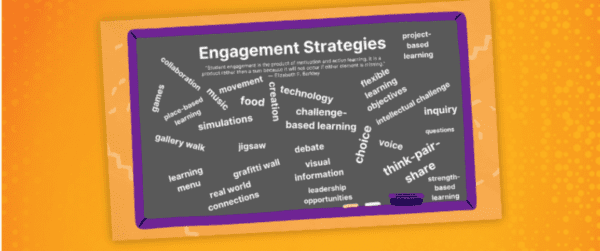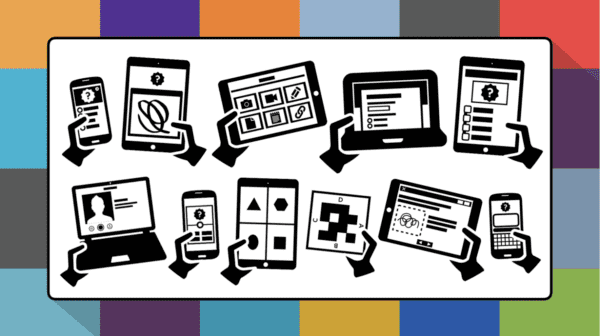Are you tired of the traditional classroom setting where the teacher lectures and students take notes? Do you want to make learning more engaging and interactive? Then, an interactive classroom might be the solution you are looking for. In an interactive classroom, students are encouraged to participate actively in the learning process, which can lead to better understanding and retention of information.
Interactive classrooms use various tools and techniques to engage students, such as interactive whiteboards, educational games, and group activities. These tools can help students learn by doing, which can be particularly effective for students who struggle with traditional teaching methods. By making learning more engaging and interactive, students are more likely to stay focused and motivated, which can lead to better academic performance.
Education constantly evolves, and interactive classrooms are becoming more common in schools and universities worldwide. Whether you are a student who wants to improve your learning experience or a teacher who wants to make your classroom more engaging, an interactive classroom can offer many benefits. So, why not explore the possibilities of interactive classrooms and see how they can enhance your educational experience?

The Role of Interactivity in Education
Interactive learning is an approach that promotes active participation and engagement in the learning process. It is a student-centred approach that emphasizes the importance of collaboration, critical thinking, and problem-solving. By using interactive techniques, educators can create a dynamic and engaging learning environment that encourages students to participate in their learning actively.
Understanding Interactive Learning
Interactive learning involves various techniques, including group discussions, peer-to-peer learning, role-playing, simulations, and hands-on activities. These techniques encourage students to engage with the material, ask questions, and explore new ideas. Educators can create a more dynamic and engaging learning environment by providing opportunities for students to interact with each other and the material.
Interactive learning also helps to promote critical thinking and problem-solving skills. By encouraging students to ask questions and explore new ideas, educators can help students develop the skills to analyze information, evaluate arguments, and make informed decisions.
Interactive classrooms have numerous benefits for both students and educators. Some of the critical benefits of interactive classrooms include:
- Increased engagement: Interactive classrooms are more engaging than traditional classrooms. By using interactive techniques, educators can create a dynamic and engaging learning environment that encourages students to participate in their learning actively.
- Improved retention: Interactive learning techniques have been shown to improve retention rates. By engaging with the material more actively and dynamically, students are more likely to remember what they have learned.
- Enhanced collaboration: Interactive learning techniques promote cooperation and teamwork. By working together on group projects and discussions, students can develop critical social skills and learn to work effectively with others.
- Personalized learning: Interactive learning techniques can be tailored to meet the needs of individual students. By providing opportunities for students to explore new ideas and concepts in a way that is meaningful to them, educators can help students develop a deeper understanding of the material.
In conclusion, interactive classrooms are an effective way to engage students and promote active learning. Using various interactive techniques, educators can create a dynamic and engaging learning environment that encourages students to participate actively in their education.
Designing Interactive Lessons
Designing interactive lessons is crucial to creating an engaging and effective learning environment. This section will explore two critical aspects of designing interactive lessons: interactive learning strategies and creating exciting lesson plans.
Interactive Learning Strategies
Interactive learning strategies involve actively engaging students in the learning process. These strategies can include group work, discussions, and hands-on activities. Using these strategies, you can create a more dynamic and engaging classroom that encourages students to participate actively in their learning.
One effective strategy for interactive learning is to use technology in the classroom. For example, you can use interactive whiteboards, educational games, and online resources to engage students and enhance their learning experience. Additionally, you can encourage students to use technology to collaborate on projects and share their ideas with their classmates.

Another effective interactive learning strategy is using real-world examples and case studies. Using real-world examples, you can help students see the relevance of their learning and how it applies to their lives. This can help students stay engaged and motivated to learn.
Creating Engaging Lesson Plans
Creating engaging lesson plans is another important aspect of designing interactive lessons. Engaging lesson plans can help students stay focused and motivated, leading to better learning outcomes.
One effective way to create engaging lesson plans is to incorporate student interests and experiences into the curriculum. For example, you can ask students to share their interests and hobbies and use this information to create lessons that are relevant and engaging to them.
Another effective way to create engaging lesson plans is to use various teaching methods. For example, you can use lectures, discussions, group work, and hands-on activities to keep students engaged and interested in the material.
In conclusion, designing interactive lessons is essential in creating an engaging and effective learning environment. Interactive learning strategies and exciting lesson plans can help students stay engaged and motivated, leading to better learning outcomes.
Techniques for Student Engagement
Engaging students in the classroom is crucial for effective learning. Here are some techniques that you can use to make your classroom more interactive and engaging.
Games and Interactive Activities
Games and interactive activities are a great way to engage students in the classroom. They provide a fun and engaging way for students to learn and can be used to teach various subjects. Some examples of games and interactive activities that you can use in your classroom include:
- Jeopardy: This classic game show format can be adapted to any subject and is a fun way to review material.
- Kahoot: This online quiz game is perfect for testing knowledge and can be played individually or as a group.
- Escape rooms: These interactive games challenge students to solve puzzles and riddles to escape a locked room. They can be adapted to any subject and are a great way to promote teamwork and critical thinking.

Discussion and Debate Techniques
Discussion and debate techniques are another effective way to engage students in the classroom. They encourage critical thinking and help students develop their communication skills. Some examples of discussion and debate techniques that you can use in your classroom include:
- Socratic seminars: These group discussions are based on open-ended questions and encourage students to think deeply about a topic.
- Fishbowl discussions: This technique involves dividing the class into two groups: one that participates in the debate and another that observes. The groups switch roles halfway through the discussion.
- Role-playing: This technique involves assigning students roles and having them act out a scenario. It can teach various subjects, including history and social studies.
By incorporating these techniques into your classroom, you can create a more active learning environment that promotes student engagement and participation.
Assessment and Feedback in Interactive Classrooms
In an interactive classroom, assessment and feedback are vital components that can help you evaluate student learning and improve their academic performance. Here are some tools and mechanisms that can help you achieve these goals:
Formative Assessment Tools
Formative assessments are ongoing evaluations that provide feedback to students and teachers during learning. They can help you identify areas where students need more support and adjust your teaching methods accordingly.
One formative assessment tool that you can use in your interactive classroom is Edulastic. This tool allows you to create standards-aligned assessments and get instant feedback on student performance. You can use Edulastic to create quizzes, tests, and assignments and monitor student progress in real-time.
Another formative assessment tool that you can use is Kahoot! This game-based classroom response system lets you create quizzes using internet content. You can use Kahoot! to engage students and assess their understanding of different topics.

Feedback Mechanisms
Feedback is an important mechanism that can help you improve student learning and engagement. It can also help you adjust your teaching methods and improve your instructional practice.
One feedback mechanism you can use in your interactive classroom is peer assessment. Interactive displays enable the presentation of peer-assessed work. Using the technology, you can establish criteria, promote constructive feedback, and rotate assessment roles. This can help students learn from each other and develop their critical thinking skills.
Another feedback mechanism that you can use is interactive displays. Interactive displays serve as central hubs for gamified assessments. You can align games with curriculum objectives, provide instant feedback, and encourage student collaboration.
Overall, formative assessments and feedback mechanisms are essential to an interactive classroom. Using these tools and mechanisms, you can evaluate student learning, adjust your teaching methods, and improve student engagement and performance.
Technology and Interactive Education
Interactive education has been gaining popularity in recent years with the advent of technology. Digital tools have revolutionized the way students learn and teachers teach. In this section, we will explore how technology has transformed interactive education.
Digital Tools for Interactive Classrooms
Digital tools have made interactive classrooms more engaging and effective. Zoom is one such tool that has gained immense popularity in the last few years. It enables teachers to conduct live video classes with students from remote locations. Zoom provides features like screen sharing, breakout rooms, and recording options, making learning more interactive.
Flipgrid is another digital tool that has made interactive classrooms more engaging. It allows teachers to create short video assignments that students can respond to with their videos. This makes the learning process more interactive and encourages students to express their thoughts and ideas more freely.
Online Collaboration Platforms
Online collaboration platforms have made it easier for students to collaborate on projects and assignments. Google Classroom is one such platform that has become popular in recent years. It enables teachers to create and manage classes, assign homework, and communicate with students. Students can collaborate on assignments and projects in real-time, making learning more interactive.
Flipped classrooms are another way technology has transformed interactive education. In a flipped classroom, students watch pre-recorded lectures at home and come to class to work on assignments and projects. This allows teachers to focus on interactive classroom activities, making learning more engaging and effective.
In conclusion, technology has transformed the way we learn and teach. Digital tools like Zoom and Flipgrid have made interactive classrooms more engaging. In contrast, online collaboration platforms like Google Classroom have made it easier for students to collaborate on projects and assignments. Flipped classrooms have also made the learning process more interactive by allowing teachers to focus on interactive learning activities.

